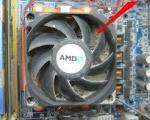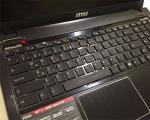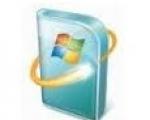Hangs on the windows 7 logo. The computer freezes after startup. What to pay attention to
Many PC users often encounter a problem when windows 7 freezes on the logo when loading, i.e. the download normally goes to a certain place, after which the operating system (OS) falls into a "stupor" and is brought to "feelings" only after pressing the Reset button .
There are many reasons that lead to this phenomenon, among which we can distinguish 5 of the most common. Let's consider them in more detail.
Possible causes and solutions
- virus programs are the main cause of fatal changes in the operating system;
It is necessary to use modern anti-virus scanners that will help identify and remove malware and spyware from your PC. If the antivirus did not help, then manually end suspicious processes in the registry and startup, then find and delete all suspicious files from the hard drive.
- Stopping the OS startup can occur when the processor and chipset overheat;
A broken cooler, old thermal paste, a radiator clogged with dust can stop a PC from working in a matter of minutes. When the system boots, you need to use one of the many utilities to check the temperature of the central processor, video card, chipset.
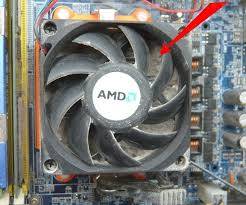
If the cause is overheating, and the cooling is functioning, but clogged with dust, then it is necessary to clean the PC using compressed air or a vacuum cleaner.
- RAM problems also often lead to unplanned shutdowns when starting Windows 7;
Among the problems of the RAM, the most common are overheating and a defect due to damage to the memory module. Unfortunately, the last type of problem can only be identified through testing.
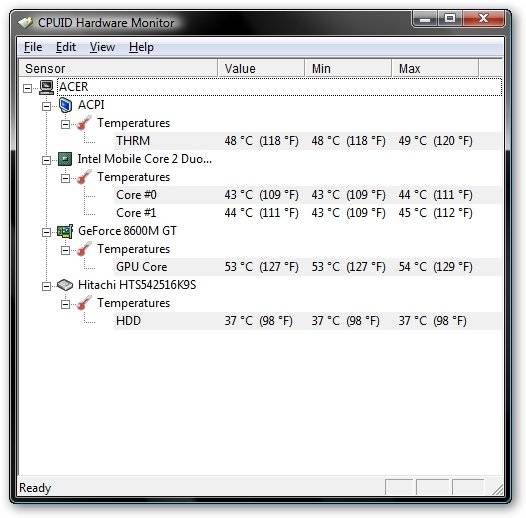
Recommendation of experts: in case of overheating, use special heat sinks that significantly reduce the risk of RAM failure. If this does not help, replace the device. A factory defect in a RAM module can resurface even after prolonged use of the memory.
- falling into a "stupor" of the PC when starting the "OS" often occurs due to mechanical, electronic, logical or software and hardware failures in the hard drive;
You can detect problems with the hard drive by testing by running the utility in Widows 7 or using third-party software. Extraneous sounds often become harbingers of screw problems. When incomprehensible noise and clicks appear in the “hard”, you need to make a backup copy of its contents and be ready to purchase a new device.
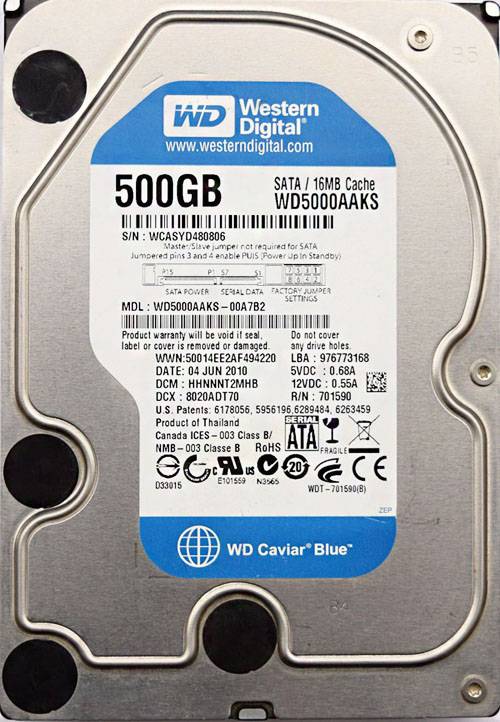
- sometimes, the reason for the "braking" of the computer during the initialization of devices is incorrect settings or an outdated BIOS version;
Most often, this happens after installing new components on an old motherboard. The BIOS may simply not have information about them. The solution in this case is quite simple: initially restore the factory settings or update the BIOS.
Sometimes you can solve the problem of PC freezing at startup by rolling back to the checkpoint that the system creates.
To do this, you need to have a boot disk and follow a few simple steps:
- restart the PC and go into the BIOS. Depending on the manufacturer, the entry keys may be different, most often it is Del; F2; Esc. In order to accurately determine the entry key, you need to refer to the documents that come with the motherboard;
- change the download priority. To do this, go to the BOOT section, after which you need to go to the Boot Device Priority menu item;
- select the item 1st Boot Device and confirm by pressing Enter. In the Option window that appears, highlight the drive and press Enter. After this procedure, the PC will start from this device;
- exit this menu, then press Esc, then Exit, after Enter, and then confirm saving the settings with the Enter key;
- insert a disk with an “OS” or a boot disk into the CDROM and reboot;
Tweaking the Registry to Identify a Hanging Issue
In order to definitely identify which process is causing the OS to stop starting, you should make a small adjustment to the registry entries.
You can do this by booting with command line support by entering the command: regedit.exe.

- in the left part of the window that opens, select the KEY_LOCAL_MACHINE folder, after that, open SOFTWARE, in this directory find and open Microsoft, then Windows;
In this directory, you need to find and open CurrentVersion, then Policies and finally System;
- having opened the System directory, pay attention to the right side of the window;
In it you need to find the Verbose Status. Open it and in the tab that opens, set the value to 1; (Default is 0)
Important! You should be aware that the desired file may not be in the registry. In this case, it must be created. Click on the free space on the right side of the window, select the New menu item, and then DWORD (32 bit) Value. Name the created file VerboseStatus with value 1.
- after that, the registry can be closed and rebooted;
As a result, when you start the OS, you will see the loaded services and system processes. On which it will stop - and is the cause of all troubles.
Video: Windows 7 freezes at startup
Working with BIOS settings
The shutdown procedure often helps to get rid of the "machine" freezing at boot: often - but not always. Sometimes BIOS settings play a decisive role, changes in which almost always lead to a PC freezing.
What you should pay attention to:

Panacea - factory reset.
Disable devices
Let's assume that the report reports that the system went into hibernation while loading the CLASSPNP.SYS driver.
In order to find out which device this driver is responsible for, you can try disabling PC components in the BIOS one by one:
- enter the BIOS when initializing the hardware by pressing the DEL key; F2; F1; Esc; depending on the manufacturer;
- go to the Advanced tab;
- find the item Integrated Peripherals;
- then you will see a list of integrated devices that need to be disabled one by one by changing the Enabled value to Disabled;
- after that, exit the menu tab and save the changes.

- reset directly from BIOS;
- by removing the battery from the system board;
- de-energize the PC;
- remove the cover from the computer system unit;
- remove the battery from the motherboard;
- after 15-30 seconds, put the battery back in place;
If you have found a component that causes Windows 7 to hang on the logo when loading, you can install a discrete device in an expansion slot on the motherboard.
Important! In the event of a device replacement, the PC may not load the OS, displaying error information on the monitor screen. To fix this, go back to the I / O system, go to the Halt On tab, and select No Errors. On the Halt On Errors tab, you need to set the value to None. Now the PC will boot even with an error.
Reset to factory settings
You can reset the parameters to "factory" in several ways, the most common of which are:
In the first case, you should go into the BIOS and select the Load Fail-Safe Defaults option. After that, answer yes to the question about resetting the parameters and save the changes. After an automatic reboot, the changes will take effect.

Method two, the easiest:
Thus, the parameters will be set by default, i.e. factory.
Video: Installing Windows 7 + Understanding the BIOS
Installing a new BIOS version
In some cases, the BIOS cannot provide proper support for all computer components due to an outdated firmware version.
This leads to their incorrect operation and braking of Windows 7 at startup:

Important! During the update procedure, do not turn off the power of the PC. This may damage the motherboard.
The methods described by us allow you to effectively solve the problem of a computer freezing at startup. If you think that the above methods do not suit you, or the PC has not been restored, then by all means contact the service center, where professionals will deal with the problem.
Working at the computer for a long time can take you a couple of extra minutes to shut down Windows. Lifehacker already wrote about one of the common ailments in which the computer turns off for too long due to an overgrown operating system paging file. But sometimes even more severe cases happen - Winda does not turn off at all. In this article, we will tell you how to calculate the cause of Windows 7 freezing when shutting down or, conversely, loading the operating system.
Introduction
Let's figure out which of the processes brings Windu into a thoughtful state. And the built-in Windows function of a detailed report on the status of startup, shutdown, login and logout will help us with this. No wonder if you haven't come across this report. This Windows setting is disabled by default and can be enabled using the Registry Editor.
Working with the Windows Registry
To launch the registry editor, simply type in the Windows search box regedit.exe.
Navigate the folder tree to a directory
KEY_LOCAL_MACHINE\SOFTWARE\Microsoft\Windows\
CurrentVersion\Policies\System
In the right part of the window, find the file with the nameVerboseStatus. Double click on it and in the window that opens enter the value1 .
If the file VerboseStatus does not appear, you need to create it. To do this, right-click and select Create, and then DWORD value (32 bits).

Give the file a name VerboseStatus and enter the parameter value 1 .

Result
As a result, instead of the usual phrases “Shutting down” or “Starting working”, the monitor screen will sequentially display loaded and closed Windows services and processes. If your system is delayed for a long time or completely freezes at a certain step, you will definitely know the reason. Reporting the startup and shutdown status does not in itself solve the problem, but it exposes the problem to the technicians you can contact for assistance.
It is likely that this trick can be implemented on other operating systems of the Windows family. If so, please share your experience in the comments.
Good afternoon. Let's consider today the problem when loading Windows, which I encountered twice during the week. The first case occurred on a personal computer, the second on an HP laptop. I searched on the Internet, it turned out that the situation is quite common and everyone has their own way of solving. Let's try each one in turn. Exactly how this problem manifests itself. According to users, they do not interfere with anyone at their computer, and one fine morning, when they try to turn on the computer, the screen freezes on the “Starting Windows” picture, at a time when the “balls” are not spinning yet. We tried to wait for 30 minutes and an hour, but nothing changed, the picture remained in place. What to do? First. We need to make sure that the problem is not in Windows itself. Perhaps, as a result of a virus attack, important system files were damaged and the system now simply cannot find them. Take a disk with a clean operating system and install. If the problem persists, then the problem is in the hardware.

Second, what is advised is to go into the BIOS and reset to default settings. To get there, look at what is written on the start picture and see something like "Press DEL Setup BIOS". This is what we need to press a couple of times on the Delete button and get into the mysterious world of "BIOS". Let's go over the sections and in the very last of them there should be an item "Load default BIOS" that's what we need. We click on it, reboot and if everything went well and you finally saw the desktop, congratulations for you the problem is solved. For those who did not help, let's move on.

Third, what we are offered is to check our hard disk for bad sectors. This can be done in several ways. For branded laptops, you can check the HDD, so to speak, "on the spot." To do this, go to BIOS and in the first section we find Self-test HDD. Found? Well done. Click on it and the test will start. If there is none, then we take any external drive, whether it be an optical disk, an external HDD, a flash drive, writes the Live CD image there or the diagnostic programs themselves and make a multiboot flash drive (you can read about this). There are many diagnostic programs, the most famous are MHDD and Victoria. If we find bad sectors, then we are looking for a replacement hard drive, but if there are no broken ones and after completing both points, the computer still does not want to work, we go to the next, fourth method.
Fourth way means, again, to “pick up” the BIOS, but this time not to reset, but to reflash. How to do this, I wrote in a recent article, you can read it. We take the firmware from the manufacturer's website. How to find out the manufacturer? Look at the start picture or enter the model of your motherboard (laptop) into the search. The firmware procedure itself will not take much time. You will be required to ensure that power is not lost during the firmware. Therefore, it is advisable to use a UPS. Flashes, turn on the computer, check. If everything is now loaded as it should, then I congratulate you, if not, then I suggest going to the last point.

Fifth what you can do with your computer is to check the RAM. Since it plays a huge role during boot, because all Windows system files are copied from your hard drive to your RAM, and if there is some problem in it, the system may get stuck waiting for a response from RAM. You can check the RAM with a program called memtest86. You can easily find an image of it on the Internet. We write it to our multiboot flash drive and start the check. This check goes through an infinite number of laps, so after the program has passed 1 lap, or better 2 (you can find out from the Pass item) and if the “Error” item = 0, then your RAM is “healthy”. If the error point is not equal to zero, then the cant is in the RAM. If there are two strips, then turning off in turn we determine the broken one, if there is one, then you will either have to buy a new one, or take it from a neighbor for a while.
sixth, check if you have connected devices, any flash drive or mobile phone. Or maybe there is a disc in the drive. Don't be lazy! Check it out! Personally, I had a case with a laptop just that also hung when loading. I fiddled with it for two days and in the end the decision turned out to be painfully ridiculous. The reason was the connected usb-mouse. Which I couldn't even think of. I just accidentally turned it off and the problem was solved instantly. The most interesting thing is that by connecting another mouse, everything worked fine. And for myself, I concluded that the first mouse was skewed, although it is A4Tech branded.
Seventh (final) a problem with the motherboard. I personally had a case when the user's computer also hung. Then I tried everything, everything that I described here, but nothing helped, then I completely dismantled the computer, since it was an ordinary stationary, and not some kind of laptop. I took out the motherboard, and there was a swollen capacitor in the chipset area.

Well, it means I changed it, and lo and behold, Windows began to boot!
Let's summarize. If you have done everything that is described here and it did not help you in any way, then the only way out is to contact the service center, where you will be diagnosed with special equipment. Of course, you will have to pay money for this, but as a result, you will get a fully working laptop. Good luck!
The problem of the operating system hanging when loading is not uncommon. A considerable number of users sometimes observe a tightly frozen Windows logo, and this may be due to a number of reasons: the presence of a software failure or problems with the computer hardware. And in order to correct the situation, you must first determine in which area this problem arose, and why the computer freezes when loading Windows 7.
Overheating and dust
To identify which device is causing the situation in which Windows 7 freezes at boot, it is initially worth checking the computer for overheating. A short-term mechanical check of the side wall of the system unit or laptop case is most often uninformative: when the PC is turned on, the case parts may simply not have time to heat up. Of course, no one bothers to wait until this happens (if overheating occurs), but this will definitely not add health to the device. Therefore, it is more expedient to resort to programmatic verification.
The launch of the operating system in safe mode is more likely to work - a special diagnostic environment with limited functionality and disabled secondary devices. To activate it immediately after loading the BIOS, you need to press "F8", which will bring up a menu of additional OS boot options, from which you need to select "Safe Mode" or "Safe Mode with Network Driver Loading".
The next step is to launch a special utility, such as CPUID HWMonitor or SpeedFan. If none of these programs was at hand, then the same network-enabled mode will come in handy: the utilities are absolutely free and can be freely downloaded from manufacturers' websites.
By running the program, you can immediately evaluate the readings of the temperature sensors of devices: for processors and video cards, the normal temperature in the absence of serious loads ranges from 30 to 60 degrees Celsius. Since safe mode is running, which minimally loads system resources, the indicators during normal operation of PC components should be within these values. If the temperature approaches critical values \u200b\u200b(100 ° C), and there is no load on the system (which can be checked through the standard "Task Manager"), then it's time to sound the alarm and start understanding the causes of overheating, due to which Windows 7 freezes at loading.
Permissible temperature indicators of the motherboard without load - from 30 to 50 degrees. If in idle time the sensor fixes about 70 - the problem is obvious.
It will not work to check the temperature of the RAM and the power supply using software methods, since thermal sensors are not installed on these devices. The easiest way is to check the air jet at the outlet of the PSU (if it is clogged with dust, it will blow like from an oven), and a tactile memory check (with caution: if the RAM overheats, touching the modules is fraught with burns).
The lack of cooling can be caused by banal dust blockages or drying out of the heat conductor. In cases with dust, with proper dexterity, it is quite possible for an ordinary user to clean up the inside of a PC, but changing thermal paste or conductor plates requires certain skills. In any case, after eliminating the causes of overheating, the system will boot up normally again.

Component problems
If the temperature test did not reveal any problems, everything is fine with the order inside the device, but Windows 7 hangs on the logo when loading anyway, you can resort to testing the hardware. Usually in such cases, pay attention to the hard drive and RAM.
Hard disk check
A problem with the mechanics of a hard drive is most often identified in the early stages of its occurrence, since it is difficult not to pay attention to extraneous sounds that have appeared, such as clicks or uneven buzz. In this case, as a rule, not only the loading of Windows 7 freezes when the computer starts, but also micro-freezes and friezes are observed during operation. The problem may lie in the loose contact of the power connectors (especially with the SATA interface). A simple replacement of the four-wire power cable will help. But if this did not help, then it's time to think about acquiring a new storage medium and creating a backup copy of the data as quickly as possible.
Logical errors in HDD operation are detected and corrected using special utilities, for example, free but effective Victoria or HDDScan. These programs are able not only to detect and fix software failures of the disk, but also to localize and mark bad sectors, isolating problem areas of the physical structure of the disk. Logical errors are correctable, physical damage is gone, so the first ones that occur on a BadBlock disk are a signal to the user that the disk should no longer be used as a store of important information.

Checking RAM
If you suspect that Windows 7 is hanging at boot due to a malfunction of the RAM, you can try to remove the memory modules from the slots, blow them out with a syringe, and then insert them back. If there are more than one modules, start the PC, alternating them and observing the behavior of the computer. As practice shows, these manipulations are quite enough. However, if the problem still remains, you should use either the standard OS tool (Windows 7 Memory Test Tool, called by the mdsched command), or one of the third-party utilities (MemTest86+). Experts recommend using MemTest, since the utility performs a more thorough analysis of RAM.

It should be borne in mind that the presence of errors in the RAM test does not always mean a malfunction of the memory modules themselves, the problem may also be hidden in the motherboard. One way or another, a full answer can only be obtained at the service center.
Software failures
PC hardware errors are not the only reason why Windows 7 freezes when loading the desktop. In the software environment, there can also be a lot of them. Moreover, a significant part arises through the fault of the users themselves.
Crowded autoload
The problem that is observed most often occurs among inexperienced users who do not understand the basics of installing software on a computer. This is especially true for fans of various cloud services, whose online installers often litter the system with additional software, besides placing it at startup. At the same time, the possibility of canceling the installation of these components by the user is simply ignored or not noticed. The solution is to check autoload and clean it if necessary. This can be done using the Msconfig system utility by calling it with a similar command from the Run menu. The "Startup" tab contains a list of all applications that start at OS startup. Disabling autorun is done by unchecking the line.

viral infection
There are enough ways for digital infection to enter the system: dubious websites, downloading and running unverified executable files, using infected removable media, etc. The behavior of virus products may vary, but the negative impact on OS boot is quite common. The solution is a full system scan with an antivirus program. At the same time, the degree of infection is an important point: in some cases, it may be necessary to launch an anti-virus product from bootable media.
Incorrect driver installation
In this case, Windows 7 freezes at boot, mainly due to a video adapter and motherboard driver error, especially during an update. The problem is solved by manually removing the driver through the Device Manager or restoring Windows from a checkpoint (if system restore is enabled).
Windows Component Update
Most often this is caused by a power failure during the update process, although software causes should not be ruled out. If Windows 7 freezes when loading after the update, but the download and installation process went as normal, it is recommended to just wait for a start: it is when the computer starts that the OS configures the installed components. As a rule, everything is limited to a relatively long wait.

But if there is no result, and after a long time Windows still shows the start screen, you will have to boot into safe mode and call the command line (Run item, and then enter cmd). Next, you need to enter the sfc /scannow command. It is responsible for scanning and restoring the integrity of OS system files. In cases of update problems, this is usually sufficient.
One of the problems that can be encountered when working at a computer is the system hangs when loading the welcome window. "Welcome". Most users do not know what to do with this problem. Let's try to find ways to solve it for a PC on Windows 7.
There can be several reasons for the hangup when loading the welcome window. Among them are the following:
- Problem with drivers;
- Video card malfunctions;
- Conflict with installed applications;
- Hard disk errors;
- Violation of the integrity of system files;
- Virus infection.
Naturally, the specific way to solve the problem depends on what exactly caused it. But all troubleshooting methods, although they are very different, have one thing in common. Since you can't log in in Standard Mode, you must turn on your computer in Safe Mode. To do this, when loading it, you must press and hold a specific key or key combination. The specific combination does not depend on the OS, but on the BIOS version of the PC. Most often this is a function key F8, But there may be other options. Then, in the window that opens, use the arrows on the keyboard to select the position "Safe mode" and click Enter.
Method 1: Remove or reinstall drivers
The most common reason that causes the computer to hang on the welcome window is the installation of drivers that conflict with the system on the computer. It is this option that needs to be checked first of all, since it causes the indicated problem in the vast majority of cases. To resume normal functioning of the PC, remove or reinstall the problematic items. Most often, these are video card drivers, less often - a sound card or other device.
- Start your computer in safe mode and click on the button "Start". Sign in "Control Panel".
- click "System and safety".
- In the block "System" follow the inscription "Device Manager".
- Activated "Device Manager". Find a name "Video Adapters" and click on it.
- A list of video cards connected to the computer opens. There may be several. It’s great if you know after installing which particular equipment problems began to arise. But since most often the user does not know which of the drivers is the potential cause of the problem, the procedure described below must be performed with all the elements from the drop-down list. So right click ( PKM) by device name and select an option "Update Drivers...".
- The update driver window will open. It offers two options:
- Perform an automatic search for drivers on the Internet;
- Search for drivers on the current PC.
The second option is only suitable if you know for sure that the computer has the necessary drivers or you have an installation disk with them. In most cases, you should choose the first option.
- After that, drivers will be searched on the Internet and if the necessary update is found, it will be installed on your PC. After installation, you must restart your computer and try to log into the system in normal mode.






But this method does not always help. In some cases, there are no compatible drivers with the system for a particular device. Then you need to remove them altogether. After that, the OS will either install its own analogues, or a certain function will have to be abandoned for the sake of the PC's performance.

If there are several video cards, you need to perform the above procedures with all of them until the problem is fixed. Also, the source of the malfunction may be incompatibility of sound card drivers. In this case, go to the section "Sound Video and Gaming Devices" and do the same manipulations that were described above for video adapters.

There are also cases when the problem is related to installing drivers for other devices. With the problem device, you will need to perform exactly the same steps that were described above. But here it is important to know, after installing which component the problem arose.
There is another solution to the problem. It consists in updating drivers using specialized programs, such as DriverPack Solution. This method is nice because it's automatic and you don't even need to know exactly where the problem is, but it doesn't guarantee that the software installs the compatible element and not the native device driver that conflicts.
In addition, the issue with loading freezes "Welcome" may be caused by a hardware problem in the graphics card itself. In this case, you need to replace the video adapter with a working analog.
Method 2: Remove programs from startup
A relatively common reason why a computer may freeze during the welcome phase "Welcome", is a conflict with the system of a certain program added to autorun. To solve this problem, first of all, you should find which application is conflicting with the OS.
- Call up the window "Run" by typing on the keyboard Win+R. In the field enter:
Apply OK.
- The shell opens "System Configurations". Move to section.
- In the window that opens, click "Disable All".
- After that, all marks near the list items in the current window should be removed. For the changes to take effect, click "Apply", OK and then restart your computer.
- After the reboot, try logging in normally. If the login fails, then start the PC again in "Safe Mode" and enable all startup items disabled in the previous step. The problem should be looked for elsewhere. If the computer starts up normally, then this means that there was a conflict with some program previously registered in startup. To find this app, go back to "System Configuration" and check the boxes next to the necessary components one by one, each time restarting the computer. If, after turning on a specific element, the computer freezes again on the welcome screen, then this means that the problem lay precisely in this program. From its autoload will need to be abandoned.




In Windows 7, there are other ways to remove programs from the OS startup. You can read about them in a separate topic.
Method 3: Check HDD for errors
Another reason why a freeze may occur when loading a welcome screen "Welcome" in Windows 7, is a hard drive failure. If this problem is suspected, it is necessary to check the HDD for errors and, if possible, correct them. This can be done using the built-in OS utility.
- click "Start". Choose "All programs".
- Go to directory "Standard".
- Find the inscription "Command line" and click on it PKM. Choose an option "Run as administrator".
- In the opened window "Command line" enter the following expression:
click Enter.
- Since the disk where the OS is installed will be checked, then in "Command line" a message will be displayed indicating that the selected volume is being used by another process. You will be prompted to check after rebooting the system. To schedule this procedure, type on the keyboard "Y" without quotes and click Enter.
- After that, close all programs and restart your computer in standard mode. To do this, click "Start", and then successively press the triangle to the right of the inscription "Shutdown" and select from the list that appears "Reboot". When the system restarts, the disk will be checked for problems. If logical errors are found, they will be automatically corrected.






If the disk has lost its full functionality due to physical damage, then this procedure will not help. You will need to either give the hard drive to the workshop of a specialist, or change it to a workable version.
Method 4: Checking the integrity of system files
The next reason that can theoretically cause a computer to freeze during a greeting is a violation of the integrity of the system files. From this it follows that it is necessary to check this probability using the built-in Windows utility, which is specially designed for this purpose.


Method 5: Scan for viruses
You should not discount the option that the system freezes due to a virus infection of the computer. Therefore, in any case, we recommend that you play it safe and scan your PC for malicious code.

The check should be carried out not with the help of a regular antivirus, which presumably has already missed the threat and will not be able to help, but by using one of the special antivirus utilities that do not require installation on a PC. In addition, it should be noted that it is recommended to perform the procedure either from another computer, or by booting the system using LiveCD (USB).
If the utility detects a virus threat, follow the recommendations that will be displayed in its window. But even if the virus is destroyed, the procedure for restoring the integrity of system objects, described when considering the previous method, may also be required, since the malicious code could corrupt the files.
Method 6: Restore point
If you have a restore point on your computer, then you can try to restore the system to a working state through it.
- click "Start". Come in "All programs".
- Go to catalog "Standard".
- Go to folder "Service".
- Click "System Restore".
- The start window of the system utility designed to restore the OS will open. Click "Further".
- Then a window will open with a list of restore points, if you have more than one on your computer. To see all possible options, check the box next to the inscription "Show others...". Choose the most preferred option. This may be the last restore point that was generated before the problems with booting the system. After completing the selection procedure, press "Further".
- Next, a window will open in which you can start the system recovery procedure directly by clicking the button "Ready". But before you do this, close all programs to avoid losing unsaved data. After clicking on the specified item, the PC will restart and the OS will be restored.







After performing this procedure, with a high probability the problem with freezing on the welcome window will disappear, unless, of course, it was caused by hardware factors. But the nuance is that the necessary restore point may not be in the system if you did not take care to create it in advance.
The most common reason that one day your computer may freeze at the welcome screen "Welcome" are driver problems. The fix for this situation is described in Method 1 this article. But other possible causes of failure should not be discounted either. Particularly dangerous are hardware malfunctions and viruses that can cause great damage to the functioning of a PC, and the problem studied here is only one of the symptoms of these “diseases”.

